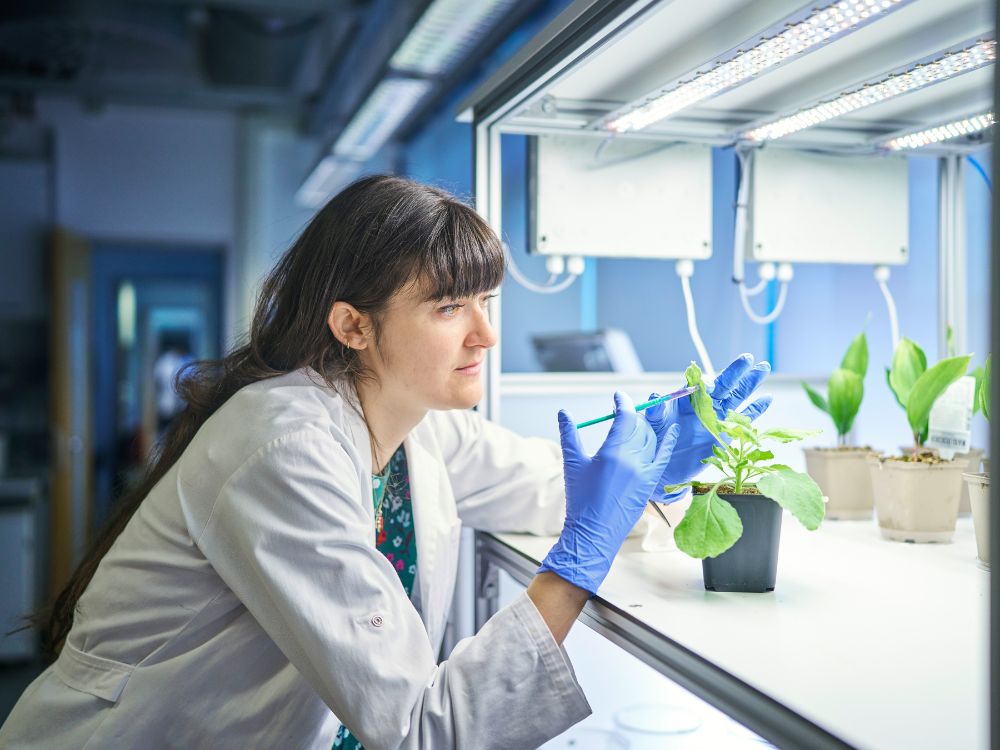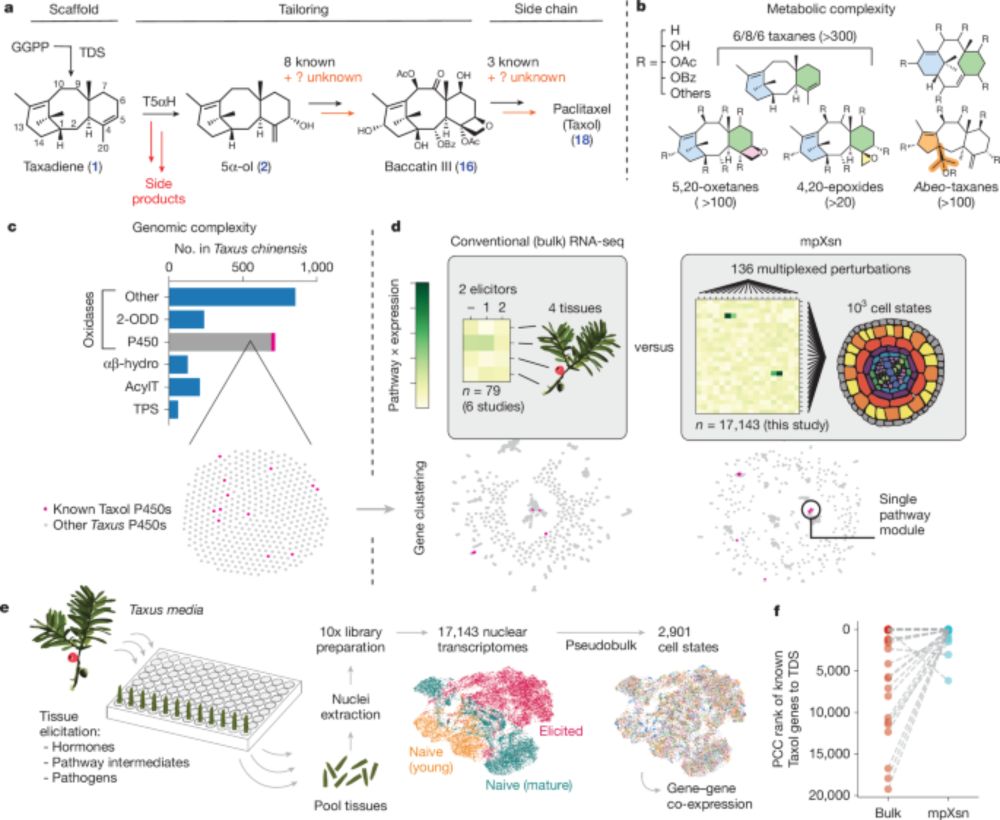Excited to see our paper online! We combined scMS and scRNA-seq from the same plant cells 🌱 — a step toward true single-cell multi-omics in plants.
Overview 👇
@vanhungbui.bsky.social
@vanhungbui.bsky.social
Excited to see our paper online! We combined scMS and scRNA-seq from the same plant cells 🌱 — a step toward true single-cell multi-omics in plants.
Overview 👇
Congratulations @mykang.bsky.social and Hai Anh Vu 🥳
24.10.2025 23:32 — 👍 2 🔁 0 💬 0 📌 0Have you tried Eurofins genomics? I think it is cheaper
18.10.2025 03:53 — 👍 0 🔁 0 💬 0 📌 0Congratulations Li! 🎉
16.10.2025 13:28 — 👍 0 🔁 0 💬 0 📌 0My first PhD paper is out today!
Huge thanks to Dr. Thuy Dang (UBC), Dr. Robin Buell (UGA), and @chenxinli2.bsky.social (MSU) for your guidance and support!
Special thanks to Li, for his mentorship in single-cell analysis and bioinformatics.

Very exciting to finally see our iridoid cyclase ICYC online @natplants.nature.com!
A joined effort with Robin Buell’s lab with Josh Wood generating snRNA-seq, and my student Chloée Tymen performing the initial experiment.
#natprod
#PlantScience
@mpi-ce.bsky.social
www.nature.com/articles/s41...
🤩🤩🤩
29.09.2025 20:36 — 👍 6 🔁 1 💬 0 📌 0The "Florédex" ✨, a pokémon-inspired vector collection of the greatest flower designs and their science is coming along nicely 🌷🧬
All hand-drawn, digitalised, and animated.
Please share! I'm looking for a postdoc. The position is to lead one of the following projects: 1) regulation of plant specialized metabolism by cell fate, or 2) foliar embryogenesis in the succulent plant Kalanchoe.
Learn more abt projects: cxli233.github.io/cxLi_lab/res...

"Large-scale single-cell profiling of stem cells identifies redundant regulators of shoot development and yield trait variation"
From: www.cell.com/developmenta...
#PlantScience

Our #research on #drought #recovery, now published with @springernature.com in @natcomms.nature.com:
Drought recovery in plants triggers a cell-state-specific immune activation.
doi.org/10.1038/s414...
Read thread below 👇
Friday Flower 001: Mimulus lewisii 🌸✨
Monkeyflowers are masterpieces of design with nectar-guide spots formed by an activator–inhibitor system of MYB transcription factors. These generate reaction–diffusion patterns across the ventral petal.

A truly enabling new approach by @taralowensohn.bsky.social Will Cody and @sattelylab.bsky.social to probe plant genetics at scale.
Single-gene-per-cell delivery coupled to an effective transcriptional selection system
www.biorxiv.org/content/10.1...
Congratulations. Hope to visit your lab one day.
04.08.2025 15:40 — 👍 1 🔁 0 💬 0 📌 0
Here, the authors @oconnorlab.bsky.social @mpi-ce.bsky.social uncover the mechanism of epimerization behind uncommon 3R-containing alkaloids in Mitragyna speciosa (Kratom) and study their inclusion in downstream biosynthesis #PlantScience #natprod
www.nature.com/articles/s41...
Happy to share that I’ve been awarded a grant from
@osventuresllc.bsky.social to develop a genetic toolkit for flower design! Here was my 1-minute pitch.
More details of what I'm building coming soon 🌹✨

Extremely happy to see our withanolide biosynthesis paper out in @natcomms.nature.com rdcu.be/evHOF
Fantastic team effort with the Pucker group @bpucker.bsky.social @puckerlab.bsky.social at @unibonn.bsky.social and Heretsch, Herde and Witte groups at @unihannover.bsky.social. Funded by @dfg.de

Lead author @matildeflorean.bsky.social et al. from the @oconnorlab.bsky.social discover a "fake" enzyme in plants that enables the formation of free indole, a key molecule for defense & attracting pollinators.
www.ice.mpg.de/496511/PR_Fl...
Next preprint out from my work @oconnorlab.bsky.social @mpi-ce.bsky.social : the discovery or iridoid cyclase in asterids!
Thread below.
#PlantScience
#natprod
www.biorxiv.org/content/10.1...

Today in Nature we report a systematic strategy to activate & identify gene sets in plants. We identify 8 new genes from the yew tree's Taxol biosynthetic pathway, enabling us to engineer tobacco with 17- & 20-gene pathways to Taxol precursors baccatin III & deBz-deoxy-Taxol #SingleCell #secmet 🧬🧪🌾
11.06.2025 19:49 — 👍 116 🔁 43 💬 3 📌 6
Finally online and open access!
This revised version has a slightly different title and contains a number of additional supplementary figures, mainly in vitro enzyme assays. Kept me quite busy in the lab at the end of last year!
#PlantScience
#natprod
www.nature.com/articles/s41...
Congratulations Li
23.05.2025 15:31 — 👍 1 🔁 0 💬 0 📌 0
Camptotheca and Catharanthus, both produced alkaloids that are used in cancer chemotherapy, last shared a common ancestor ~115 mya. They shared an iridoid biosynthetic pathway. We found new, rare biosynthetic genes in Camptotheca that are different from those in Catharanthus.
New preprint! We used single cell sequencing & metabolomics to look at cell type specificity of specialized metabolism in Camptotheca, the source of chemotherapeutic agent camptothecin, as well as comparative analyses w/ Catharanthus, which we previously worked on. 🧵
www.biorxiv.org/content/10.1...
Our data imply that the same clades of TFs have been co-opted to regulate cell type specific biosynthesis across species. Thus, 1) cross-species analyses increase the power for finding new metabolic regulators; 2) TFs are evolutionarily older than their target biosynthetic genes. 3/n
24.04.2025 17:00 — 👍 4 🔁 1 💬 1 📌 0This is my 1st paper as last author & (co-)corresponding author. It's a pleasure to mentor the 1st author @vanhungbui.bsky.social at U. British Columbia, Okanagan on single cell analysis. This study was supported by an NSF-EAGER project awarded to me (coPI) + Robin Buell at University of Georgia.
24.04.2025 17:00 — 👍 4 🔁 1 💬 0 📌 0
A screenshot of the long Acknowledgement section of a manuscript draft.
New manuscript has been written. An international collaboration between US, Germany, and Canada. And a long Acknowledgement section, since each lab has its own funding, services, and colleagues to acknowledge.
31.03.2025 02:54 — 👍 14 🔁 3 💬 1 📌 0